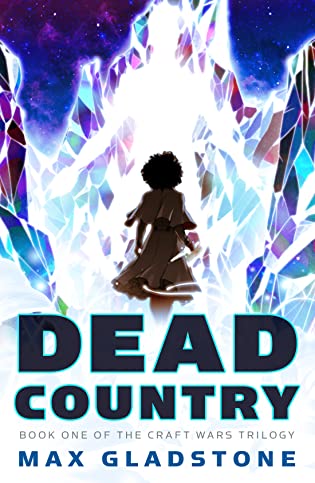 Dead Country (Craft Wars, #1) by Max Gladstone
Dead Country (Craft Wars, #1) by Max Gladstone Format: eARC
Source: supplied by publisher via NetGalley
Formats available: paperback, ebook
Genres: fantasy, horror, urban fantasy
Series: Craft Wars #1, Craft Sequence #7
Pages: 256
Published by Tordotcom on March 7, 2023
Purchasing Info: Author's Website, Publisher's Website, Amazon, Barnes & Noble, Kobo, Bookshop.org, Better World Books
Goodreads
Since her village chased her out with pitchforks, Tara Abernathy has resurrected gods, pulled down monsters, averted wars, and saved a city, twice. She thought she'd left her dusty little hometown forever. But that was before her father died.
As she makes her way home to bury him, she finds a girl, as powerful and vulnerable and lost as she once was. Saving her from the raiders that haunt the area, twisted by a remnant of the God Wars, Tara changes the course of the world.
Max Gladstone's world of the Craft is a fantasy setting like no other. When Craftspeople rose up to kill the gods, they built corporate Concerns from their corpses and ushered in a world of rapacious capital. Those who work the Craft wield laws like knives and weave chains from starlight and soulstuff. Dead Country is the first book in the Craft Wars Trilogy, a tight sequence of novels that will bring the sprawling saga of the Craft to its end, and the perfect entry point for this incomparable world.
My Review:
Home may be the place that when you have to go there, they have to take you in. But just because they have to take you in, it doesn’t mean they have to let you stay. As Tara Abernathy discovered back when she was young and desperate, scared and hurting, abused mentally, emotionally and magically. She came home to tiny Edgemont, on the edge of the Badlands, looking for a place to heal and recover.
What she found back then was an increasing tide of raids by the hungry, cursed Raiders, and a town that was too hidebound to do what was really necessary to fight back. So, in her youth and arrogance, she tried to do it for them. They forced her out with torches and pitchforks.
She can’t go home again – not after what she – and they – did. Or so she believes. And she’s probably right.
But when she receives a message from her mother that her father is dead, she goes anyway. To find out what happened. For the funeral. For closure of one kind or another – even if it’s at the pointy ends of a new set of pitchforks.
It should be different now. After years of life-altering practice in the necromantic contracting of the Craft, Tara has not merely power but the knowledge of when to – and more importantly when not to – use that power in the face of people who are mostly just plain afraid of what she can do.
Edgemont, and the entire Badlands, are under siege by the hungry, infected, cursed Raiders, at the end of their collective rope and facing inevitable absorption by a curse that consumes everything it touches including the bodies of its victims. Victims who are compelled to hunt for more grist for the mill of a curse that has become more voracious and deadly in Tara’s absence.
Edgemont needs someone to save it, and Tara needs to strike back at everyone who ran her out of town back when she needed them most – but who, conversely and perversely – made her the power she has become.
She’ll spit in their collective eye by saving them all. Whether they want her to or believe she can – or not. All while she attempts to train an apprentice, protect her mother and fight off a curse. Only to discover that she is returning to the beginning of all things just at the point where the end is entirely too nigh.
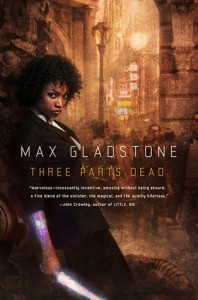 Escape Rating A: Once upon a time (back in 2012) there was a book titled Three Parts Dead, the first book in the Craft Sequence, set in a world where Craft equals magic, and where that magic is rooted – often literally – in a combination of contract law and necromancy.
Escape Rating A: Once upon a time (back in 2012) there was a book titled Three Parts Dead, the first book in the Craft Sequence, set in a world where Craft equals magic, and where that magic is rooted – often literally – in a combination of contract law and necromancy.
Yes, all lawyers are necromancers in this world. It’s still a WOW concept and seems totally and utterly RIGHT, both at the same time.
In that utterly awesome opening book, Tara Abernathy – yes, the same Tara Abernathy, pictured on that cover of Three Parts Dead to the left – was at the beginning of her career, fairly fresh out of the whole torches and pitchforks experience.
Dead Country is the golden opportunity I didn’t know I was waiting for to return to the world of the Craft Sequence without needing to remember every detail of this intricately detailed world. (Contract law, remember? LOTS of details. Positively – and negatively – entire metric buttloads of details – generally arising from the dead bodies – including butts – of gods.) The whole thing is intensely fascinating and I loved the series but I got a bit lost at the end and didn’t finish. I’ll probably go back.
But Dead Country is a starting over kind of book. While Tara comes home with all her years of experience and power, she is returning back to her point of origin – in more ways than she believes as she’s on her way back for her father’s funeral. That return kicks off Craft Wars, a new sequence in the Craft Sequence, and provides the perfect place for new readers to get themselves stuck right in – as well as giving returning readers a way of coming back to a place once loved but not remembered in detail. Just as Tara herself does.
In Three Parts Dead, Tara was still a neophyte, giving readers the opportunity to learn about her world and her Craft right along with her. In Dead Country, she is older and sadder, if not always wiser, just as the readers (and probably the author) are, making her yet again a character that the reader can identify with.
Her parents’ home and village have gotten smaller, she has gotten bigger, and the world has gotten darker and more dangerous, as it does as we move further into adulthood. At the same time, the old fears and the old grudges are all still very much active, and it’s all too easy to slip back into the same old patterns of thought and action. As Tara does. As we do.
The overarching story of the series is a huge one – as it should be. Tara discovers that saving the world is part of some old business she thought she’d finished. She faces traumas both old and new, driven to clean up the messes she left behind, and it nearly kills her.
But death is not an ending when you’re a necromancer. Unless it’s the death of her entire world. Or her soul. Hopefully, we’ll all find out in the second book of the Craft Wars, equally hopefully in the not too terribly distant future.

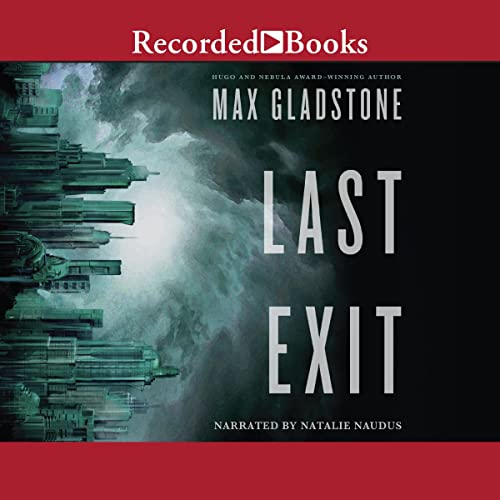 Last Exit by
Last Exit by 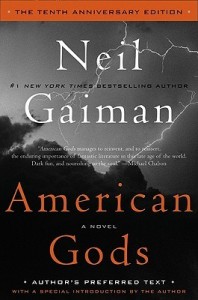 Escape Rating A-: In the end, Last Exit is awesome. But it takes one hell of a long and painful journey to reach that end. Because it starts with all of them not just apart, but in their own separate ways, falling apart. And it ends with all of their demons coming home to roost – and nearly destroying them – as they relive the past and do their damndest to push through to either some kind of future – or some kind of sacrifice to balance out the one they already made when they lost Sal.
Escape Rating A-: In the end, Last Exit is awesome. But it takes one hell of a long and painful journey to reach that end. Because it starts with all of them not just apart, but in their own separate ways, falling apart. And it ends with all of their demons coming home to roost – and nearly destroying them – as they relive the past and do their damndest to push through to either some kind of future – or some kind of sacrifice to balance out the one they already made when they lost Sal.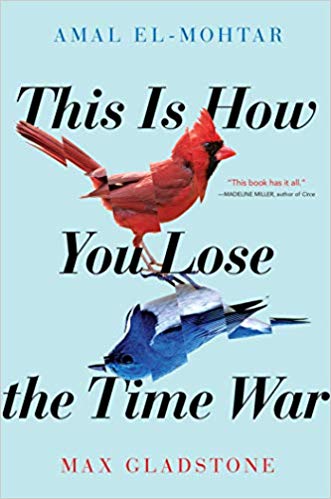 This Is How You Lose the Time War by
This Is How You Lose the Time War by 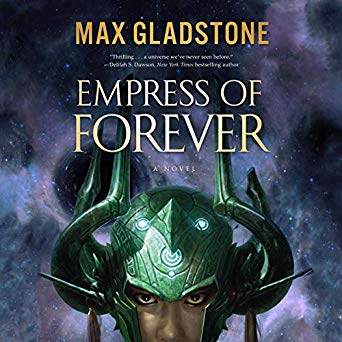 Empress of Forever by
Empress of Forever by 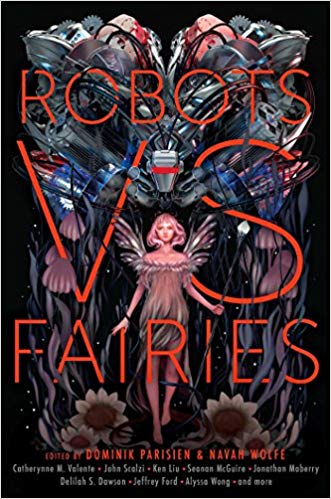 Robots vs. Fairies by
Robots vs. Fairies by 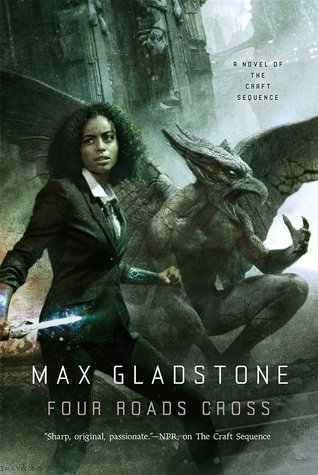 Four Roads Cross (Craft Sequence, #5) by
Four Roads Cross (Craft Sequence, #5) by 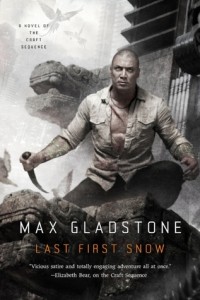 Like the other books in this series, this one rides on the strength of the different and surprising relationships that have formed, particularly in the wake of the events of Three Parts Dead. We also see a much different perspective on Craft and the persons who practice it than we have previously. Elayne Kevarian, the Craftswoman who carries much of the action in Three Parts Dead and
Like the other books in this series, this one rides on the strength of the different and surprising relationships that have formed, particularly in the wake of the events of Three Parts Dead. We also see a much different perspective on Craft and the persons who practice it than we have previously. Elayne Kevarian, the Craftswoman who carries much of the action in Three Parts Dead and